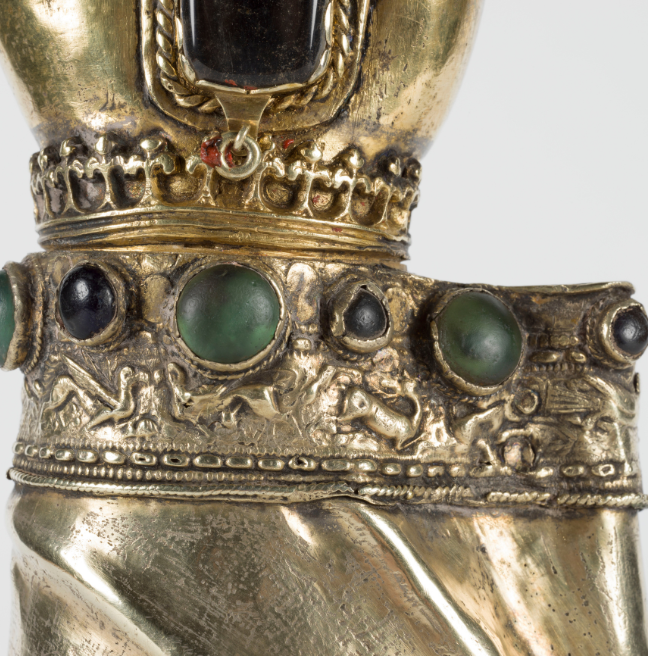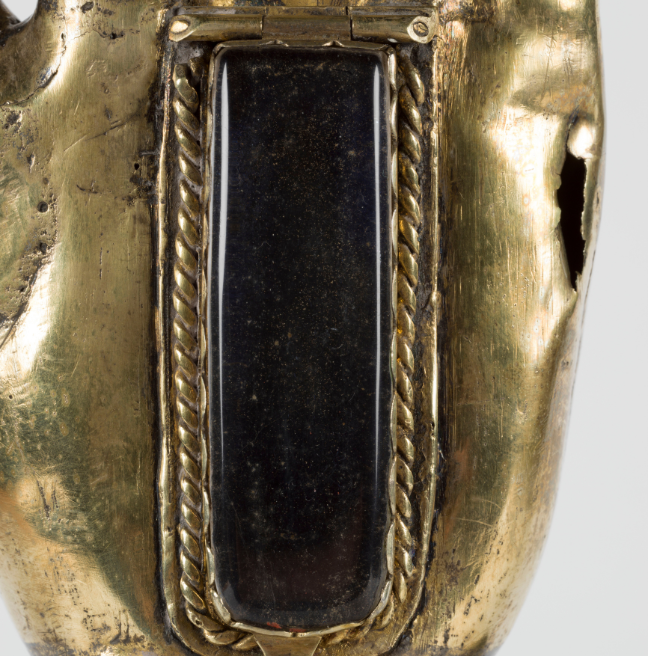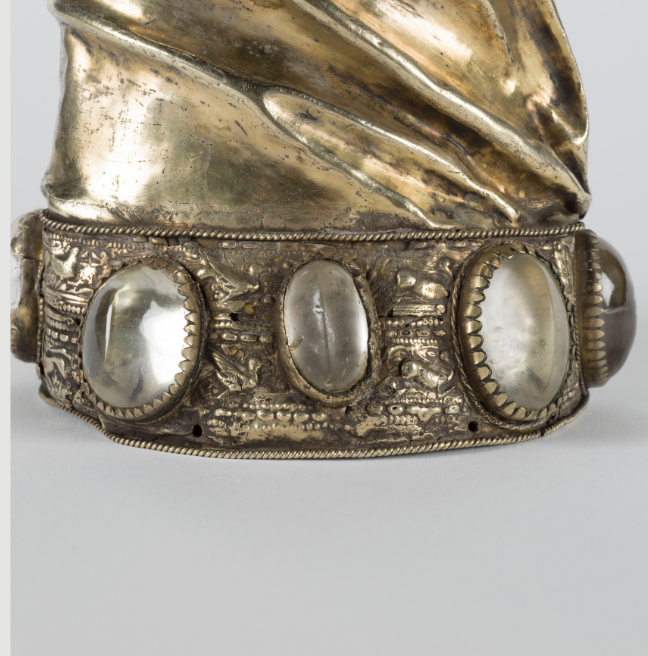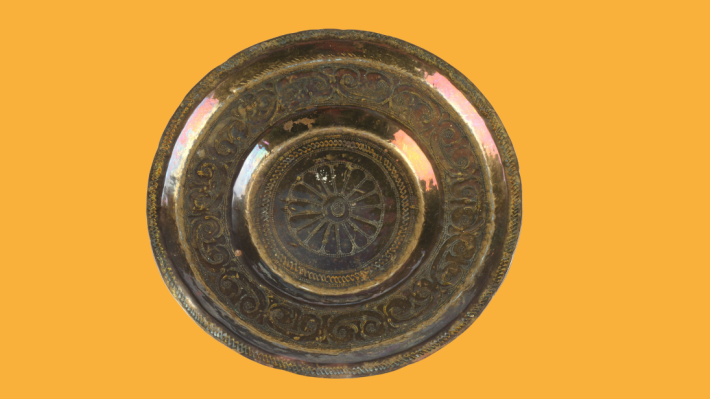
the shrine of st patrick's hand
Learn about the 14th-century Shrine of St. Patrick's Hand with Curator of Archaeology, Niamh Baker. The shrine is still used today during mass on St. Patrick’s Day in St. Patrick’s Parish, Belfast.
What is a relic and reliquary?
A relic can be an object which had touched the body of a saint, part of the remains of the body or an item used by a saint.
By the end of the fourth century, with the spread of Christianity - the religion of the Roman empire - there was an increase in the public recognition of saints. They were seen as intermediaries between this world and the next. Miracles confirmed this power of the saints and made objects associated with them, such as relics, all the more significant as they were seen to also hold this sacred power.
These objects were widely distributed and themselves became the focus of pilgrimage. In Ireland and northern Britain, relics of the remains of saints were often placed in free standing containers known as shrines, or reliquaries, made of metal or wood. Sometimes they reflected the shape of the relic they held, like St. Patrick’s hand shrine.
The Cult of St. Patrick
The most developed cult of medieval Ireland was that of Patrick, the fifth century patron saint. Armagh was the centre of this cult from the seventh century, producing objects of fine metalworking. This hand shrine is part of the material culture of the cult of St. Patrick, including churches, images, reliquaries and accounts of his life.
From the twelfth to the eighteenth century, a number of shrines associated with Patrick were produced, including those of Patricks tooth, hand and arm, head, jaw and thumb. These shrines were thought to hold the relics of St. Patrick, as alleged to have been discovered at Downpatrick in 1185.
The Anglo-Norman interest in treating relics as sacred objects opened up new forms of metalworking.

St. Patrick's Hand Shrine
The shrine of St. Patrick’s hand is the only arm-reliquary of Gothic form in Ireland and is on long term loan to the Ulster Museum by the Diocese of Down and Connor. It is a type of reliquary common in Europe between the twelfth and seventeenth century.
The shrine of St. Patrick's hand, also called St. Patrick's arm shrine, dates to the fourteenth or fifteenth century. Animal ornamentation and details such as fleur-de-lys borders associate this shrine with a series of reliquaries made for Gaelic and Anglo-Norman patrons.
Made of gilt silver, the shrine depicts a sleeved right forearm and hand in the position of a blessing. It is decorated with die-stamped animals and a series of green, blue and black domed glass studs.
There are another five oval studs, one of rock crystal and the other four of clear glass, decorating the bottom of the shrine. The animal ornament includes a pattern of two lions, two griffins and two stags, which is characteristic of Irish art of the Middle Ages. These details demonstrate the shrine is of Irish origin, enabling us to date the reliquary to this period.
A ring is soldered in position on the second finger and is set with a stud of light purple glass (a restoration). The base is a flat plate bearing the IHS monogram in Roman lettering, and may be a later addition to the shrine.
Using the Shrine in a St. Patrick's Day Ceremony
Today the shrine is used during mass on St. Patrick’s Day in St. Patrick’s Church, Belfast, and is a wonderful example of a medieval reliquary still in use in contemporary society.
There is a shallow oblong depression in the back of the hand, outlined in twisted wire and covered by a hinged lid of rock crystal. This is where the relics of the saint are placed for adoration during the service on St. Patrick’s Day, as can be see in the short film above.
Enshrinement of the relics of saints has been practiced since the early centuries of Christianity and this precious object is still catching the attention of parishioners and doing the job it was created for over 600 years ago.
You Might Also Like
How did they do that?
One of the fascinating aspects of the past is pondering on how things were made without the aid of modern technology. Learn more about these intricate objects from our experts.
Bida Plate: Ammunition into Art
Guest blog from Dr. Olusegun Morakinyo, exploring the African collection and in particular, the Bida plate.







